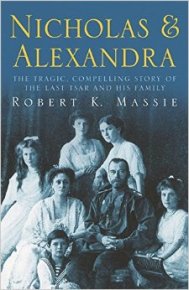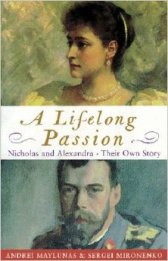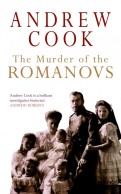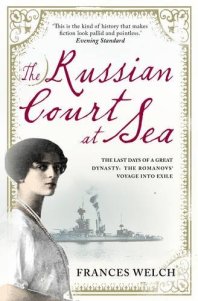In the summer of 2014, my Mum and I decided to go to Paris for a holiday. Now, I’ve been to Paris once before, but that was when I was fairly young and we did Disney and seeing family. But for this holiday, it was the first one I planned. I wrote about the first three days on my old blog, and found it to be a good way to travel down memory lane. So, I thought I’d include a line of blogposts about my experiences in travelling to Paris and what I got up too.
The planning took about six months.
Research went into restaurants, tourist attractions, apartment rentals, hotels, flights, Eurostar deals, Metro lines, RER timetables and supermarkets. I’m a very particular person and when it comes to visiting a foreign country, I go by the belief ‘it’s better to be safe than sorry’. However, do not be alarmed! If you do find yourself in the French capital without any sense of direction or clue, it is so well signposted in both English and French it is quite difficult to get lost. The Metro (in my experiences) also runs quite regularly and with accuracy, and if you follow the major tourist attractions, you will navigate Paris with ease.
But for my particular holiday, I did plan every conceivable outcome.
So, where did we stay? My mother and I both agreed that we would rather stay in a apartment rather than a hotel. It would give us more privacy, and we wouldn’t have to rush in the morning or evening for set meals. We would be able to come and go as we pleased, and we could just relax.
So, I went on trusty old Google, and took on the difficult task of finding a centrally-located Parisian flat for reasonable prices.
Now, staying in Paris is just like staying in any major city. There are neighbourhoods to avoid, and places without good transport links into the centre. Also, if you are travelling into Paris via the Eurostar, it’s handy to have your base somewhere that is within reach of Gare Du Nord.
And after much umm-ing and ahh-ing, I finally decided on the sweet little rental of Studio Villette.
Studio Villette is a nifty little studio located in the 10th arrondissement, and near Canal Saint-Martin. It is within 5 minutes of the closest metro line (either Colonel Fabien, or the one we preferred, which was Jaurés) and the flat itself is in a very secure and quiet courtyard, with heavy doors, keypads and two sets of keys keeping you away from the street. As tourists, we found that using Jaurés was the best Metro station for us, as finding it was just a simple right-turn down the boulevard from your front door, and it is also near various supermarkets and delicious little restaurants. The Metro also ran every five minutes or so, and from Jaurés (with Line 5) you could reach the Bastille and Gare d’Austerlitz (from which you can go out of the city, and to places such as Versailles with). The neighbourhood was typical of anywhere you could find in any major city, and since we spent the majority of our time outside of our little location, it quickly became a comfortable place to go and have dinner.
We booked through the Roomorama.co.uk site, and found the prices extremely competitive, and for a week and splitting the costs, Paris suddenly became very affordable.
The studio was exactly what we wanted. With two beds (one being a queen-size and one being a single sofa-bed) it suited our needs down the ground, and with a little kitchen and bathroom, it was a place to go back and relax after a day of exploring the city. It also came with free high-speed Wifi, which the code was supplied after booking.
The owner, Maud was extremely welcoming and she gave brilliant directions on how to retrieve the keys, and left city guides for us. Also, for extra cost, she also supplied bedding and towels.
This apartm ent easily took myself and my mother, and I’m sure it could could cater for three people sharing too. So I thoroughly recommend it, and will include links below to where we booked and the main website that it is listed under.
ent easily took myself and my mother, and I’m sure it could could cater for three people sharing too. So I thoroughly recommend it, and will include links below to where we booked and the main website that it is listed under.
—
Now, I live in the South-West of England. So getting anywhere can be a right pain. Getting the train to London takes about six hours, and flying is ridiculously over-priced. Now, Paris was going to be a pricey holiday anyway, and the Eurostar for us cost about £70 each and we needed to get up to London for the early afternoon and through the cheapest method.
So my mother and I booked a National Express coach. We would leave at 4 in the morning, and get to London Victoria Coach Station at around 12.30.
Which we did. And the journey was long, yes. So tiring and so long as it disturbed our night sleep, but all in all it wasn’t too bad. There were comfortable seats, an on-board toilet, plug sockets and you were allowed to bring cold food and hot beverages with lids.
And it cost both of us £25 each.
Bearing mind this is from the farthest point away and was a return journey.
£25 was nothing.
So we arrived at Victoria, and caught the tube to St. Pancras, and began the checking in, which required tickets, passport etc. It’s a good idea to get yourself to the station about 45 minutes beforehand, just due to the fact that booking in and boarding the train can be time-consuming. Within St. Pancras they have a lot of amenities for holidays, but after checking in, the booths they have are over-priced and a lot like the ones you get in airports, so either be prepared to fork out for expensive sandwiches to eat on the train, or eat and buy beforehand.
 The Eurostar itself is a fairly nondescript service. It takes around 2 and a half hours, and you spend the majority of that above ground and looking at the countryside. Like other trains, they have bars on the train, in which towards the end of the journey you can buy Metro/Oyster cards, depende
The Eurostar itself is a fairly nondescript service. It takes around 2 and a half hours, and you spend the majority of that above ground and looking at the countryside. Like other trains, they have bars on the train, in which towards the end of the journey you can buy Metro/Oyster cards, depende
nt on which way you’re travelling. However, these seemed like a lot of money for us, so we decided to wait until we got to Gare Du Nord, buy a single Metro ticket to get to our apartment and deal with the rest of the weeks journey the day after.
This suited us, but if you wish to be prepared, you could just go through the Eurostar and buy beforehand.
We arrived at Gare Du Nord around 4.30 in the evening, and began to start the last leg of our journey to our apartment. As I said, we bought the single Metro tickets (T+ ticket) which were around 1.70 Euros per travel, so not too bad.
Also, word of warning – if you wish to buy Metro tickets from the little machines, you need the exact money via coins to pay or a card. A lot of these machines don’t have paper money slots.
Our Metro journey was short but tiring, and finding the apartment was the typical first-day-getting-lost-which-direction-am-I-going strife. But after we dumped our bags , we had a stroll down the boulevard and found a little restaurant on the corner where we had a delicious dinner of Croque-Monsieur, salad and chips. The restaurant was called Le Conservatoire, and I’ll list the address below. They serve a variety of meals, large portions for fairly good prices. Mother and I ate there three out of five nights, and despite the waiter not speaking much French, we got a friendly welcome.
, we had a stroll down the boulevard and found a little restaurant on the corner where we had a delicious dinner of Croque-Monsieur, salad and chips. The restaurant was called Le Conservatoire, and I’ll list the address below. They serve a variety of meals, large portions for fairly good prices. Mother and I ate there three out of five nights, and despite the waiter not speaking much French, we got a friendly welcome.
All in all, we were travelling for twelve hours that day in different ways, so naturally we were exhausted.
So, that is my first day all sorted. Links for any necessary sites are below, and I’ll continue my Parisian posts in the next few weeks.
ParisHomes.Fr – Website featuring Parisian flats to rent.



 eason I love it so is because not only does it focus on the last Tsar, but it is also a really good introductory piece for people who want to start reading around his family and the lead-up to the Revolution. Some of the reference books you can buy can be very in depth and overwhelming, and for seasoned Russian historians like myself, that isn’t a problem. But for people who are interested in the whole Anastasia mystery, and want to learn a little bit more of the historical side, Massie’s text is good for them. The way Massie writes is in a very readable and clear style, and it is obvious how well researched this book was. The amount of detail he goes into is very good, and he writes contextually too. So you get the fullest picture of Russia at the time. What also makes this book interesting is the emotional way he deals with the tsarevich’s illness, which Massie himself had to deal with fir
eason I love it so is because not only does it focus on the last Tsar, but it is also a really good introductory piece for people who want to start reading around his family and the lead-up to the Revolution. Some of the reference books you can buy can be very in depth and overwhelming, and for seasoned Russian historians like myself, that isn’t a problem. But for people who are interested in the whole Anastasia mystery, and want to learn a little bit more of the historical side, Massie’s text is good for them. The way Massie writes is in a very readable and clear style, and it is obvious how well researched this book was. The amount of detail he goes into is very good, and he writes contextually too. So you get the fullest picture of Russia at the time. What also makes this book interesting is the emotional way he deals with the tsarevich’s illness, which Massie himself had to deal with fir owed for each other, and how they perceived the world around them and the changes that were happening in the time they lived in.
owed for each other, and how they perceived the world around them and the changes that were happening in the time they lived in.

 Tsar in a sense but what happened to his extended family after Nicholas and Alexandra’s deaths.
Tsar in a sense but what happened to his extended family after Nicholas and Alexandra’s deaths. it is the photographs you pay for. It also features diary extracts, scans of unseen letters and everything you need for a visual treat. It’s emotional in some places, just because you do see how the family functioned, not as a royal family but like a normal one and it does beat all over rivals for a photographic book about the Romanovs.
it is the photographs you pay for. It also features diary extracts, scans of unseen letters and everything you need for a visual treat. It’s emotional in some places, just because you do see how the family functioned, not as a royal family but like a normal one and it does beat all over rivals for a photographic book about the Romanovs.








